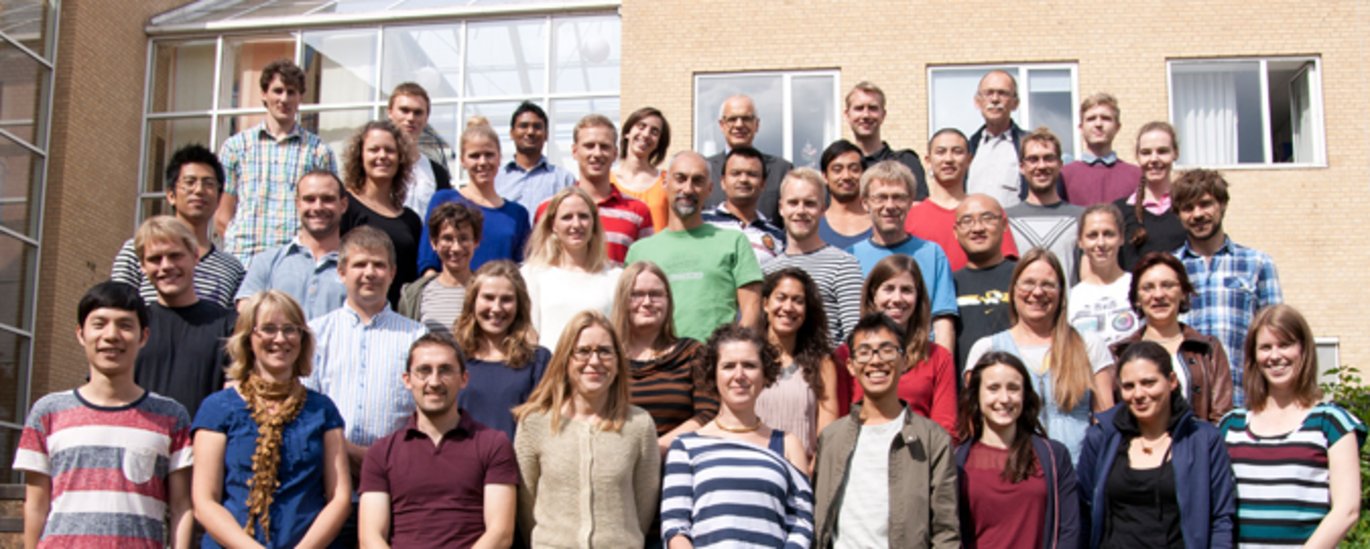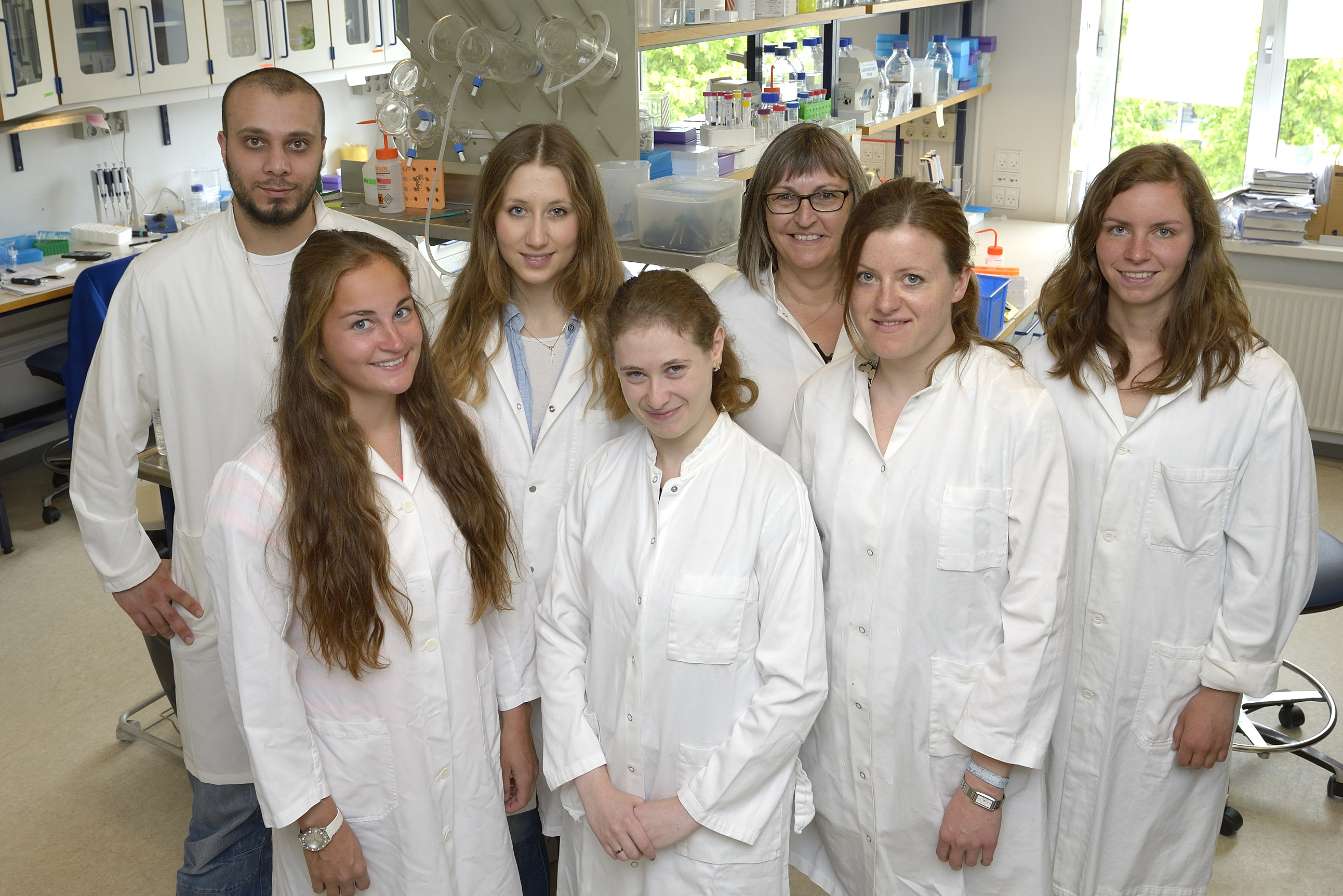Internationalisation with a vengeance
Aarhus University urges researchers and students to focus on international collaboration. This commitment is fully met by the Department of Molecular Biology and Genetics, as approximately 140 of the department’s more than 400 staff members and PhD students come from abroad – representing most of the world.


The aroma of many different herbs and spices fills the canteen at the Department of Molecular Biology and Genetics (MBG) when staff and students are eating their lunch, just as many different languages fill the air – English, German, French, Spanish, Chinese, Polish and Danish. Nobody is in any doubt at all that this is an international environment. When the people of many nationalities are working together in the laboratories, however, the main language is English.
Coming to a culture that is possibly completely different from their own can be a major upheaval for the staff and students from abroad.
PhD student Terry Mun, who came from Singapore more than a year ago, can attest to this.
“When I came to Denmark, I thought the language barrier would be the most difficult, but I can manage in English everywhere I go. On the other hand, the cultural barrier was quite a challenge,” he says. “It takes longer to make friends with Danes than with Singaporeans, who are much more open to forming friendships,” he continues. “But if you take the initiative yourself, this can lead to a deeper friendship once you’ve got to grips with the Danes,” concludes Terry Mun.
Why are there so many foreigners at the department?
Professor Jens Stougaard is the director of the Centre for Carbohydrate Recognition and Signalling (CARB), a Centre of Excellence at Aarhus University supported by the Danish National Research Foundation. The centre consists of 49 members of staff and students, 28 of whom come from abroad, representing 15 different countries.
“The group doesn’t make conscious efforts to recruit large numbers of staff and students from abroad,” says Professor Stougaard. “In connection with the assessment of applications for postdoctoral positions and PhD fellowships, however, we select candidates with the highest academic level in the advertised field, and these come form abroad in many cases,” he adds. “However, our Danish staff and students also work abroad because all the research groups at the department collaborate with both Danish and foreign researchers, and this often results in short-term or long-term staff exchanges,” concludes Professor Stougaard.
Why do foreigners apply to Aarhus University?
A number of the research groups at MBG have succeeded in attracting major national and international research grants. This has enabled them to advertise a considerable number of research positions, which are applied for by researchers and students from Denmark and abroad.
Terry Mun originally came to Denmark as an exchange student for six months (three of which he spent in Jens Stougaard’s laboratory), and he liked the place so much that he decided to apply for a PhD fellowship on an equal footing with all other students.
“It was quite by chance that I chose Aarhus University when I applied to come here as an exchange student from Singapore,” he says. “However, because I really liked the atmosphere, the great enthusiasm and expertise, and the projects offered in Jens Stougaard’s laboratory, I applied to come back and was one of the lucky ones who got a PhD fellowship,” concludes Terry Mun.
There was one thing in particular that attracted Postdoctoral Fellow Yasuyuki Kawaharada, who came to Aarhus from Japan more than four years ago.
“For me, the exciting research project headed by Jens Stougaard was the most important reason for applying for the postdoctoral position in the laboratory,” says Yasuyuki Kawaharada.
What does it mean to have so many foreign colleagues?
“The foreign colleagues are generally extremely motivated, committed and flexible, and it’s clear that they’re very ambitious when it comes to achieving success. This adds a certain drive to the work, which means that the group has much better opportunities for achieving results,” says Professor Stougaard. “And because we come from many different cultures, it means we think differently. This can be a great advantage because it leads to different ideas for solving problems,” he continues.
Even though the foreign members of staff generally work very long hours and often eat their meals at the department, there is also time for relaxation.
“When we get together socially, it’s really exciting with so many different cultures, and this is reflected in the celebration of different religious festivals and holidays, accompanied by unusual culinary specialties,” concludes Professor Stougaard.
International laboratory technician trainees
A foreign background is not restricted to the researchers alone. No fewer than six of the department’s eight laboratory technician trainees come from abroad. They are all taking the international programme for laboratory technicians at Business Academy Aarhus, and are spending one year as trainees at the department. English is the official language for their study programme.
Maria-Alexandra from Romania says that she heard about the Aarhus education programme when she attended a study fair in Romania.
“What made me interested was largely the opportunity to use this education programme to further my career. I feel it provides me with a good mixture of practical and theoretical work, which I’m considering taking further in a few years,” she says.
Two of the laboratory technician trainees in the photo have now graduated, and they have been employed at the department.
For more information, please contact
Lisbeth Heilesen
Department of Molecular Biology and Genetics
Aarhus University, Denmark
lh@mb.au.dk – +45 8715 5454
Photo of the laboratory trainee and the quotation from Maria-Alexandras udtalelse are from the newsletter from the union of the technicians (HK).
